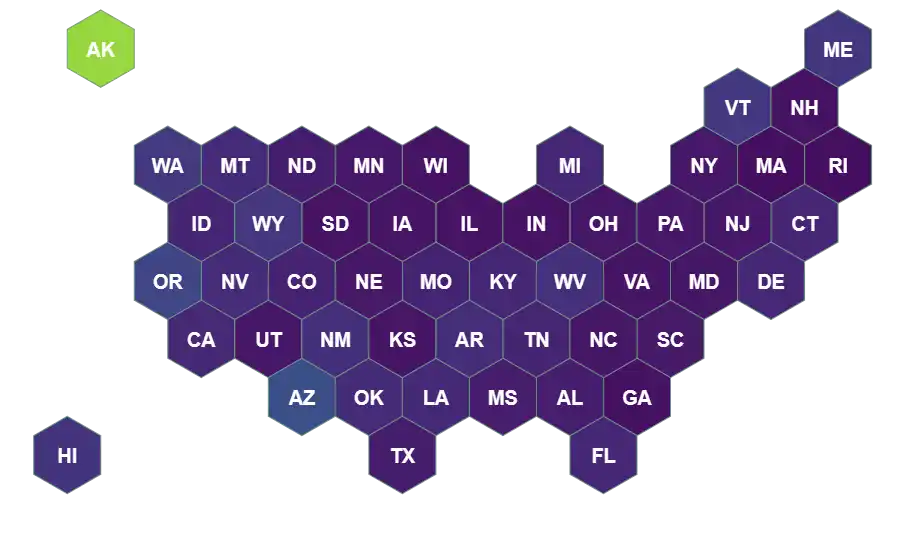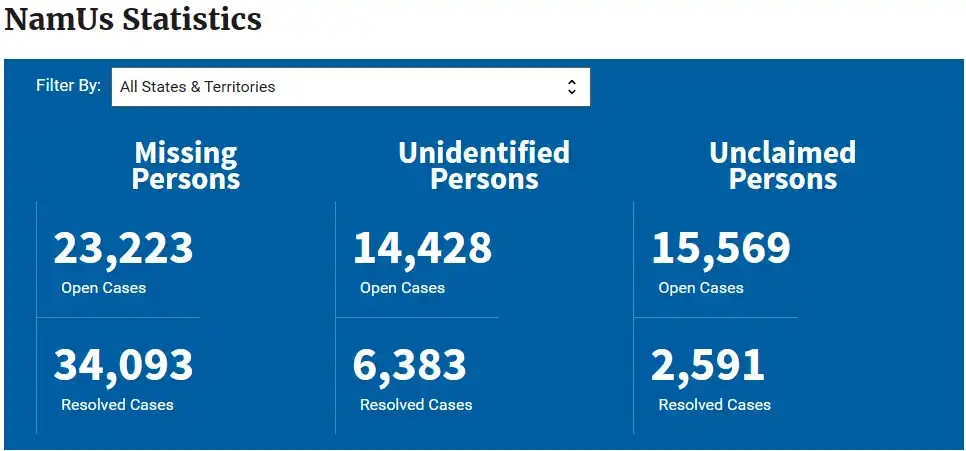Missing Persons: Unveiled
Understanding the Issue of Missing Persons

Have you ever found yourself facing the overwhelming challenge of dealing with a missing person? It's a situation that can leave you feeling lost, confused, and desperate for answers. We've all heard stories or seen news reports about individuals who mysteriously vanish, leaving their loved ones in a state of anguish. But how do you deal with a missing person?
First things first, contact the authorities right away. They have the experience and resources to launch an investigation. Make sure to provide them with all the important details and information about the missing person. Reach out to your support networks—family, friends, and community—for emotional support and assistance. Sharing their picture and information on social media can help spread the word. While waiting for updates, try to stay hopeful and patient, although it's easier said than done. Remember, the situation is tough, but you are stronger than you think. Take it one step at a time, and together, we'll get through this challenging time.
I. Introduction
Let's dive into the world of missing persons together. When we talk about missing persons, we're referring to individuals who have disappeared without a trace, leaving their loved ones and authorities searching for answers. Understanding this issue is crucial because it goes beyond mere awareness. It's about recognizing the impact it has on families, communities, and society as a whole. By understanding the complexities surrounding missing persons, we can advocate for change, support affected families, and work towards prevention and resolution. Together, we can shed light on this important issue and make a difference. So, let's explore the definition of missing persons and why it's essential to grasp the significance of this topic. Buckle up, and let's embark on this eye-opening journey!
II. Scope of the Problem

A. Statistics and numbers of missing persons
The scope of the missing persons issue is significant, with a considerable number of individuals going missing each year. According to available data, over 600,000 people go missing annually in the United States, as reported by the National Missing and Unidentified Persons (NamUS) database. This statistic highlights the scale of the problem and the urgency in addressing it.
B. Different categories of missing persons (e.g., children, adults)
Missing persons can be categorized into various groups, depending on age and other factors. Children make up a significant portion of missing persons cases, with a higher number of missing individuals under the age of 21. Additionally, adults can also go missing due to various circumstances, such as elderly individuals with cognitive impairments or individuals involved in dangerous situations.
C. Geographic and demographic factors
The issue of missing persons is not limited to specific regions or demographics. It affects communities across the country and spans diverse geographic areas. Factors such as urban environments, rural locations, or proximity to bodies of water can impact the search and recovery efforts. Additionally, demographic factors like socioeconomic status, race, and gender can influence the circumstances surrounding missing persons cases, including the resources available for search and support.
Understanding the scope of the problem helps us comprehend the magnitude of the issue and the need for effective prevention, response, and support systems. By recognizing the statistics, different categories of missing persons, and the influence of geographic and demographic factors, we can better tailor our efforts to address this complex issue and work towards positive outcomes.
III. Contributing Factors
A. Runaway cases: Causes and risk factors
When it comes to missing persons, runaway cases play a significant role. Various causes can lead someone to run away, such as family conflicts, abuse, peer pressure, or seeking independence. Risk factors like a history of running away, substance abuse, or unstable living conditions can increase the likelihood of someone choosing to leave. Understanding these causes and risk factors can help us address the root issues and provide better support systems to prevent individuals from running away.
B. Human trafficking and its connection to missing persons
Another alarming factor is the connection between missing persons and human trafficking. Vulnerable individuals, especially women and children, can become targets of human trafficking networks. Understanding how traffickers exploit the vulnerabilities of missing persons can help us combat this heinous crime, raise awareness, and support initiatives aimed at rescuing victims and prosecuting traffickers.
C. Mental health issues and their impact
Mental health challenges often intertwine with cases of missing persons. Conditions like depression, anxiety, or substance abuse can contribute to someone choosing to go missing. It's crucial to recognize the impact of mental health issues and ensure access to proper mental health support and resources. By addressing mental health concerns, we can potentially prevent individuals from becoming missing persons and provide better care for those who are already missing.
IV. Challenges in Solving Missing Persons Cases
A. Lack of resources and funding
One of the major hurdles in solving missing persons cases is the persistent lack of resources and funding. Law enforcement agencies often face limited budgets and manpower, making it difficult to allocate sufficient resources to investigate each case thoroughly. Adequate funding is crucial for conducting comprehensive searches, employing specialized teams, and utilizing advanced technology to aid in locating missing individuals.
B. Jurisdictional issues and coordination between agencies
Another challenge arises from jurisdictional complexities and the coordination between different agencies involved in missing persons cases. Cases may span multiple jurisdictions, requiring effective collaboration and information sharing between local, state, and federal authorities. Ensuring seamless communication and cooperation is vital for a unified effort in finding missing persons and conducting efficient investigations.
C. Time-sensitive nature of investigations
Time is of the essence when dealing with missing persons cases. The first few hours and days after a person goes missing are critical for successful outcomes. Unfortunately, delays in reporting, limited initial information, or other factors can impede swift action. Investigators must act promptly, gathering evidence, interviewing witnesses, and initiating search operations to maximize the chances of a safe recovery. The time-sensitive nature of these investigations adds pressure and underscores the importance of rapid response and public cooperation.
V. The Role of Technology and Amber Alert System
A. Advancements in technology aiding in locating missing persons
In the quest to locate missing persons, technology has become a powerful ally. Advances like GPS tracking, facial recognition, and data analysis have revolutionized the search process. Law enforcement agencies now have access to tools and databases that enhance their ability to locate missing individuals. Digital platforms, social media, and online communities also play a significant role in spreading information quickly and engaging the public in the search efforts.
B. Overview of the Amber Alert system and its effectiveness
One notable technology-driven initiative is the Amber Alert system. The Amber Alert is a rapid-response system designed to mobilize communities in cases of child abduction. When a child is believed to be in imminent danger, law enforcement agencies work in tandem with media outlets to issue urgent alerts, broadcasting vital information to the public. Through radio, television, digital signage, and mobile devices, these alerts engage a vast network of individuals who can aid in the search and recovery of the missing child. The effectiveness of the Amber Alert system has been demonstrated in numerous cases, leading to successful rescues and reunifications.
VI. Support and Resources for Families of Missing Persons
A. Non-profit organizations and helplines
When a loved one goes missing, families often find solace in the support and resources provided by non-profit organizations and helplines dedicated to assisting those affected. These organizations offer a compassionate ear, guidance, and a wealth of information to help families navigate the challenging journey. Helplines provide a lifeline, offering immediate support and guidance to families in crisis, ensuring they are not alone in their search for answers.
B. Emotional and practical support for families
The emotional toll on families dealing with a missing person is immense. Alongside the search efforts, families require emotional support and coping mechanisms to navigate this difficult time. Support groups, counseling services, and therapy sessions offer a safe space for families to share their experiences, express their emotions, and find comfort in the company of others who understand their pain. Practical support, such as assistance with legal matters, financial guidance, and access to resources, is also crucial to help families overcome the challenges they may face.
C. Advocacy for policy changes
Families of missing persons often become advocates, fighting for policy changes and reforms to improve the response to missing persons cases. They collaborate with organizations, policymakers, and law enforcement agencies to raise awareness, push for legislation to enhance search protocols, and ensure better support for affected families. Through their advocacy efforts, families contribute to a collective voice that drives systemic changes, giving hope to others who may face similar circumstances in the future.
Support and resources for families of missing persons are essential to help them navigate the difficult journey, find comfort, and maintain resilience. By fostering a network of support, we empower families and create an environment where they can access the assistance they need while advocating for systemic changes that improve the response to missing persons cases.

VII. Prevention and Safety Measures
A. Education and awareness campaigns
Prevention is a crucial aspect when it comes to addressing missing persons cases. Education and awareness campaigns play a significant role in empowering individuals and communities. These campaigns aim to educate people about the risks, warning signs, and preventive measures associated with missing persons. By promoting awareness through media, schools, community events, and online platforms, we equip individuals with the knowledge they need to stay safe and make informed decisions.
B. Parental guidance and communication
Parental guidance and open communication are vital in keeping children and teens safe. Establishing trust, maintaining healthy relationships, and fostering open lines of communication enable parents to stay connected with their children's lives. By engaging in meaningful conversations about personal safety, online risks, and responsible decision-making, parents can help their children develop critical thinking skills and make informed choices, ultimately reducing their vulnerability to potential risks.
C. Safety tips for individuals, especially children and teens
Sharing safety tips and practical advice is essential for individuals of all ages, especially children and teens who may be more vulnerable. Tips may include being aware of surroundings, avoiding isolated areas, using privacy settings on social media, not sharing personal information with strangers, and having a trusted adult to turn to in case of any concerns. By empowering individuals with these safety measures, we promote a culture of vigilance, preparedness, and personal responsibility.
Prevention and safety measures are essential components in reducing the occurrence of missing persons cases. By focusing on education, fostering strong parent-child relationships, and promoting personal safety tips, we create a community that is proactive, informed, and equipped to protect its members from potential risks.
VIII. Collaborative Efforts and Success Stories
A. Case studies of successful recoveries
In the realm of missing persons, there are stories of hope and triumph that inspire us all. Examining case studies of successful recoveries sheds light on effective strategies, collaborative efforts, and the impact of community involvement. These stories highlight the tireless dedication of law enforcement, the unwavering support of communities, and the resilience of families. By studying these cases, we gain valuable insights into what works and how we can replicate success in future missing persons investigations.
B. Importance of collaboration between law enforcement and communities
Collaboration between law enforcement agencies and communities is paramount in addressing missing persons cases. When law enforcement agencies work hand in hand with communities, sharing information, expertise, and resources, the chances of a successful outcome significantly increase. Community members can act as eyes and ears on the ground, providing valuable tips, sightings, and support during search operations. By fostering strong partnerships and effective communication, law enforcement and communities become powerful allies, united in their mission to locate missing individuals.
These collaborative efforts and success stories remind us of the strength that lies in unity. By sharing and learning from successful recoveries, and by fostering collaboration between law enforcement and communities, we create a network of support, hope, and determination. Together, we can make a difference in the lives of those affected by missing persons cases and strive towards a future where every missing person is found.
FAQ
How many people go missing each year in the United States?
According to the National Missing and Unidentified Persons (NamUS) database, over 600,000 people go missing annually in the United States.
How many unidentified bodies are recovered each year?
Approximately 4,400 unidentified bodies are recovered each year in the United States, as reported by the NamUS database.
What was the number of missing person cases in 2021?
In 2021, the National Crime Information Center (NCIC) reported a total of 521,705 missing person cases in the United States.
How many people remained actively missing at the start of 2022?
At the start of 2022, 93,718 individuals were still actively missing, according to the NCIC Missing Person and Unidentified Person Files.
Are there more missing persons under the age of 21 than adults?
Yes, the data shows that the number of missing persons under the age of 21 is higher. In 2021, there were 194,673 females under 21 reported missing and 62,552 females over the age of 21 reported missing.
What are some reasons why people go missing?
People go missing for various reasons, including cases of kidnapping, individuals purposefully going missing to escape abuse or dangerous situations, and instances where individuals choose to run away.
What should I do if someone I know goes missing?
If someone you know goes missing, it's important to take immediate action. Start by contacting the local law enforcement agency to file a missing person report. Provide them with all available information, including physical descriptions, last known whereabouts, and any relevant circumstances. Additionally, inform the missing person's friends, family, and acquaintances to gather additional information or support in the search efforts.
Are there any organizations that can assist in locating missing persons?
Yes, several organizations specialize in assisting in the search and recovery of missing persons. Examples include the National Center for Missing and Exploited Children (NCMEC), the National Missing and Unidentified Persons System (NamUS), and local non-profit organizations dedicated to finding missing individuals. These organizations can provide resources, support, and guidance throughout the process.
Is there a waiting period before reporting a person as missing?
No, there is no mandatory waiting period to report someone as missing. If you have concerns about a person's well-being and suspect they are missing, contact the authorities immediately. Time is of the essence in missing persons cases, and reporting promptly increases the chances of a successful resolution.
What can I do to help prevent missing persons incidents?
Prevention is crucial in addressing missing persons cases. You can contribute by staying vigilant, keeping an eye out for any suspicious activities or signs of distress in your community. Educate yourself and others about personal safety measures, such as being cautious online, informing trusted individuals about your whereabouts, and teaching children about stranger danger. Additionally, support organizations that raise awareness, provide resources, and work towards prevention and recovery efforts.
IX. Conclusion
A. Recap of the main points discussed
Throughout this article, we have delved into the world of missing persons, highlighting key aspects of this important issue. We explored the prevalence of missing persons in the United States, with over 600,000 people going missing annually, as reported by the National Missing and Unidentified Persons (NamUS) database. We also discussed the significant number of unidentified bodies recovered each year.
Furthermore, we examined the statistics for missing person cases in 2021, with a total of 521,705 reported cases, and emphasized the higher number of missing persons under the age of 21. We acknowledged that individuals go missing for various reasons, including kidnapping, escaping abuse, and running away.
B. Encouragement for continued efforts in addressing the issue of missing persons
It is crucial to recognize the importance of addressing the issue of missing persons and to encourage ongoing efforts in this regard. By raising awareness, supporting organizations dedicated to locating missing individuals, and advocating for policy changes, we can make a difference. Collaboration between law enforcement agencies, communities, and support networks plays a vital role in successfully resolving missing persons cases.
Let us remember that every missing person is someone's loved one, and their safe return brings immeasurable joy and relief. By staying informed, supporting prevention measures, and promoting community involvement, we can work together towards a world where missing persons are found, families are reunited, and hope is restored.
For more information and in-depth exploration of missing persons, including cold cases and mysterious disappearances, we invite you to read our article titled “Missing Persons – Delving into Cold Cases and Disappearances.“










